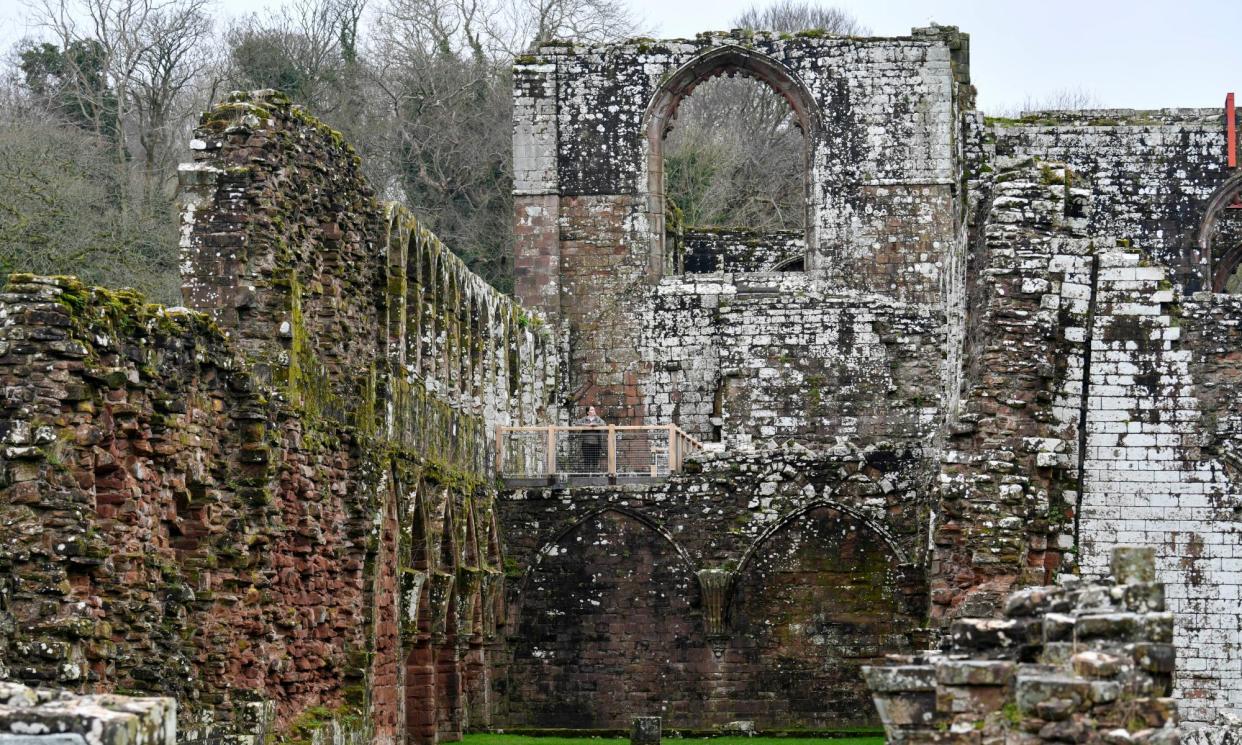Medieval monks’ night staircase rebuilt at Furness Abbey

A staircase used by weary medieval monks when they had to file down from bed to their church services in the middle of the night has been rebuilt in some of the most atmospheric monastic ruins in England.
Exactly 900 years since it was first built and almost 500 years since it was destroyed, the night staircase has been reconstructed at Furness Abbey in Cumbria.
The project will give visitors extra insight into the daily lives of medieval monks, said Michael Carter, English Heritage’s senior properties historian.
Visitors can climb to what was the first-floor level of the monks’ dormitory and enjoy previously unseen views of ruins that have long captivated people, with JMW Turner and William Wordsworth having been two notable fans.
“Furness has some of the finest monastic ruins in England,” Carter said. Reinstating the night staircase recreates “an experience that was central in the lives of the medieval monks” as well as “giving visitors the unique opportunity to look back in time and see these remarkable ruins through the eyes of the monks themselves”, he said.
Furness Abbey, on the outskirts of Barrow, was founded in the first half of the 12th century by monks who had moved there from Preston, and it prospered, becoming the largest and wealthiest monastery in north-west England.
The night staircase was only ever used by the monks, to get from their cold, communal dormitory to the church for the daily matins service, which was usually between 1 and 2am.
They would have passed a statue of St Christopher strategically located to be the first thing they saw each day. “Seeing it provided them with protection from a bad death,” Carter said – as in one with an unconfessed mortal sin that would lead them to hell. It was also protection “against the tiredness brought about by daily toil”, Carter said. “The church would have been a very cold, dark space, so very easy to succumb to tiredness I think.”
The early morning service was one of eight that punctuated the monks’ day. After matins there was lauds at first light and prime at sunrise, all the way through to compline before bedtime, usually around 7pm.
A new timber structure has been put on the site of the original stairs, which were probably destroyed during Henry VIII’s dissolution of the monasteries. The structure meets the original stone steps, allowing visitors to get previously unseen views of the ruins.
And it is the views that have drawn so many people over the years, notably Turner who loved scrambling over and drawing northern monastic ruins.
Wordsworth adored the abbey and did much to popularise it as a tourist destination in his Guide to the Lakes.
Other visitors have included Queen Victoria in 1848 – “so beautiful it was, and so extensive”, her lady in waiting recorded – and a young Teddy Roosevelt, the future US president, in 1869.
Carter said there was something special about Furness Abbey. “I remember the first time I ever went there, being blown away by the scale of the place and that beautiful red sandstone … it really is a dramatic site.”
He said so many monastic ruins in northern England were located in places where people had hard lives. They spoke to people in different and wonderful ways, he said. “OK, there have been the Turners and the Wordsworths at Furness loving the place, but equally it has been the docker, the shipbuilder, the miner, the factory worker on a day excursion … it has been somewhere which provides space to live.”


